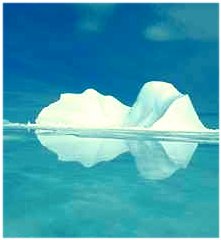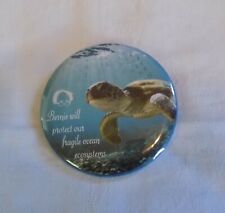
Vast swarms of small jellyfish-like creatures, known as salps, may have a greater impact on carbon cycling than previously thought, say scientists in the May issue ofDeep Sea Research. The discovery demonstrates that even the most unassuming of organisms can play a vital role in the stabilization of environmental systems.
Oceans suck up a considerable amount of excess carbon dioxide from the atmosphere, which also includes carbon dioxide released during the burning of fossil fuels. The presence of carbon dioxide allows surface marine plants called phytoplankton to grow, which in turn are eaten by marine animals that incorporate the carbon dioxide. A significant proportion of the carbon dioxide dissolves back into the ocean when the animals defecate or die, where it is reused by animals and plants, or released back into the atmosphere as a greenhouse gas.
Biologists Laurence Madin of Woods Hole Oceanographic Institution (WHOI) and Patricia Kremer of the University of Connecticut have found that salps can transport large quantities of carbon dioxide from the surface of the ocean to the bottom before it is released back into the atmosphere as greenhouse gas. Approximately the size of a human thumb, salps are “hot spot” dwelling, barrel-shaped marine animals that propel themselves through the ocean by sucking in water from the front and jettisoning it out the rear. During this process the water flows over a mucus membrane that absorbs all edible matter. The team estimates that a salp swarm can consume up to 74 percent of microscopic carbon-containing plants from the surface water per day, and that their sinking fecal pellets transported up to 4,000 tons of carbon a day to deep water.
The team has found that salps are nocturnal creatures that spend most of their time hanging out at depths of around 1,970 to 2,625 feet during the day, and swim to the surface at night; a behavior known as vertical migration. “At the surface,” Madin said, “salps can feed on phytoplankton. They may swim down in the day to avoid predators or damaging sunlight. And swimming up at night allows them to aggregate to reproduce and multiply quickly when food is abundant.” This is yet another plus in regard to keeping carbon away from the atmosphere, as salps release most of their fecal pellets at depths where animals are unlikely to eat them.
The team also plan to study salp swarms in the Southern Ocean near Antarctica, acting on reports of the existence of salp populations in years when the waters are warmer. Madin and Kremer say that if this is true, and the Antarctic climate warms, salp swarms could have a significant impact on phytoplankton and carbon dioxide in the Southern Ocean ecosystem.













Comments are closed.